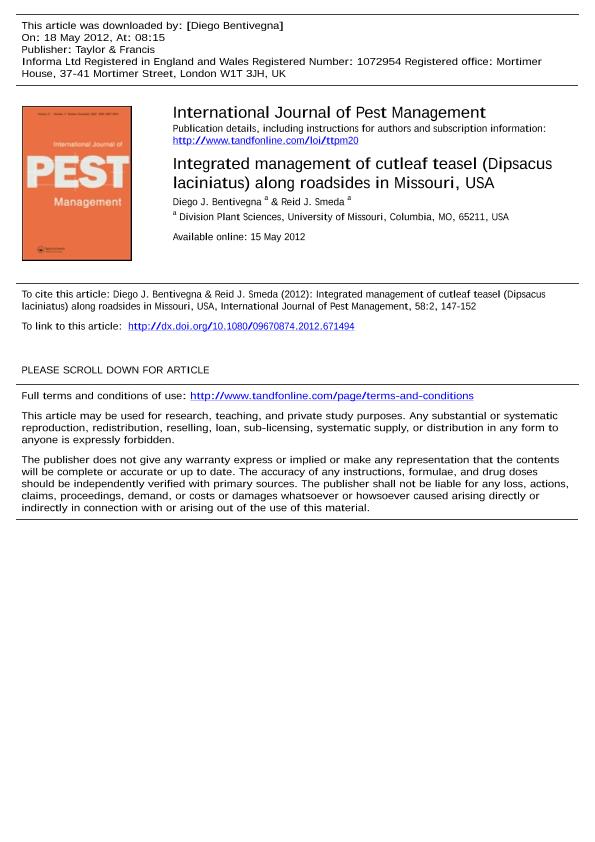Artículo
Integrated management of cutleaf teasel (Dipsacus laciniatus) along roadsides in Missouri, USA
Fecha de publicación:
04/2012
Editorial:
Taylor & Francis Ltd
Revista:
International Journal Of Pest Management
ISSN:
0967-0874
Idioma:
Inglés
Tipo de recurso:
Artículo publicado
Clasificación temática:
Resumen
Cutleaf teasel is a biennial, invasive weed found along roadsides throughout much of the central USA. Long-term management should, ideally, integrate chemical and cultural practices. Research in Missouri along Interstate Highway 70 was initiated to combine chemical applications with overseeding perennial grasses. A field experiment was carried out with a split-plot design (four replications), where the main plot factor was herbicide applied, and the sub-plot factor was grass species overseeded. Herbicide treatments comprised dicamba þ diflufenzopyr, aminopyralid, triclopyr, and metsulfuron. Grass species included tall fescue þ buffalograss or Canada wildrye þ buffalograss. Cutleaf teasel coverage was reduced from 79% to 93% for all herbicide treatments except triclopyr, 5 months after the last herbicide application. Seedling counts of cutleaf teasel were lowest for aminopyralid by 6 months after the last herbicide application. The herbicide programme that provided 490% cutleaf teasel control and resulted in at least 65% grass establishment resulted in up to a 93% reduction in cutleaf teasel emergence by 363 days after initial herbicide application. Integration of applications of herbicides and desirable seeding grasses are needed over a long period to exclude cutleaf teasel in roadside areas.
Archivos asociados
Licencia
Identificadores
Colecciones
Articulos(CERZOS)
Articulos de CENTRO REC.NAT.RENOVABLES DE ZONA SEMIARIDA(I)
Articulos de CENTRO REC.NAT.RENOVABLES DE ZONA SEMIARIDA(I)
Citación
Bentivegna, Diego Javier; Smeda, Reid J.; Integrated management of cutleaf teasel (Dipsacus laciniatus) along roadsides in Missouri, USA; Taylor & Francis Ltd; International Journal Of Pest Management; 58; 2; 4-2012; 147-152
Compartir
Altmétricas




